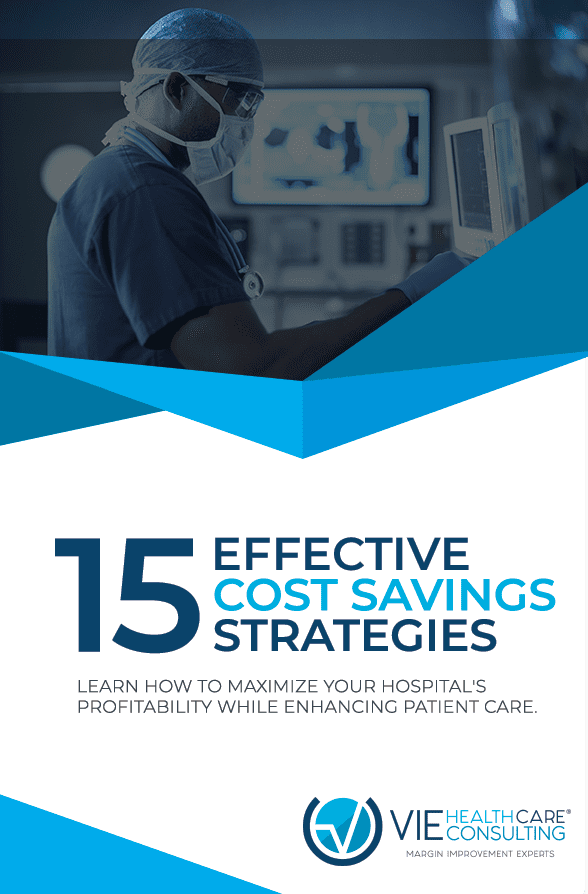Modern Technology in Healthcare
This article was written by Jim Cagliostro.
Modern technology has transformed the way we communicate, travel, work, play, entertain, worship, eat, exercise, and even sleep. It continues to revolutionize healthcare in the US and around the world, but in participating in this change, is your hospital adding technology or adding value?
The impact of technology in healthcare
The desire for leading edge technology, coupled with a commitment to helping others, has resulted in the greatest innovations and successes in modern healthcare.
Some notable milestones include:
- 1752 – Flexible catheter invented.
- 1816 – Stethoscope invented.
- 1895 – X-rays discovered.
- 1901 – First electrocardiogram (EKG) machine used.
- 1958 – First cardiac pacemaker implanted.
- 1972 – Computed tomography (used for CT Scans) invented
- 1972 – Pulse oximetry invented.
- 1972 – First iteration of electronic health record (EHR) used.
- 2000 – Barcode technology used for medication administration.
Today, the use of pedometers, continuous glucose monitors, and wearable heart monitors are commonplace.
Furthermore, the ability of patients to view their health records or communicate with physicians using their mobile phone is now standard. Healthcare in its current form would be unrecognizable to patients and practitioners from a generation ago.
The benefits of technology in healthcare

Both patients and healthcare providers benefit from advancements in technology.
For example, the use of telehealth has greatly increased over the past decade. Telehealth can be defined simply as the provision of health related services by means of telecommunication technology.
- Health systems and insurance companies use virtual visits to successfully care for patients in isolated rural areas or in the middle of the night.
- Some hospitals install cameras to monitor confused patients, leading to a significant reduction in falls.
- Other providers use technology to improve communication with family during procedures, enhance discharge instructions, and reduce readmissions by managing chronic diseases.
Healthcare organizations can realize significant benefits by investing in new technologies[1]. For instance, one hospital increased on-time starts in the OR by 25%, boosting patient satisfaction and realizing cost savings of almost $300,000 per month.
A second hospital was able to reduce the time that ICU patients spent on ventilators by utilizing advanced technologies, lowering the risks associated with prolonged ventilation.
Multiple children’s hospitals have provided iPads to patients and their families to give them access not only to movies, games, and social media, but also to medical records and treatment plans. This intervention significantly improved patient satisfaction and family engagement.
A note of caution
If the use of telehealth and other modern technologies available to healthcare providers clearly reap benefits, why are many hospitals still reluctant to get on the bandwagon?
Conventional wisdom suggests[2]:
“…the modern technology empowered economy increases efficiency, strengthens customer relationships and improves customer satisfaction. When companies focus on enhancing their online customer experience, these companies can reach a broader audience, provide additional services, and strengthen customer satisfaction.”
While this may hold true in most industry sectors, healthcare often does not fit so neatly into the same box.
Healthcare is one industry where many consumers (ie, the patients) have a strong desire to experience the human touch. They want – and expect – personalized care and service and may feel like they are not receiving it if much of their care is performed remotely.
In these cases, embracing new technology may actually decrease the value and quality of care given to a specific population. In these cases, it then becomes a matter of delivering something to patients that they view as inconvenient or unwanted.
According to an article in Forbes, the top five barriers to technology adoption in healthcare are[3]:
- Inappropriate technologies that do not address healthcare’s most pressing needs.
- Insufficient funding (reluctance to pay for the technology).
- Physician resistance.
- Technologies that actually impair provider productivity (more screen time can mean less time to see patients).
- The perceived impersonality of patient technology.
Adding technology does not necessarily guarantee added value, unless it is carefully evaluated and managed.
When considering the application of a new technology for your hospital, your specific situation cannot be ignored. Understand what your employees want and what your patient population needs. Listen to your physicians and work with them to adopt technologies that add value to patient care.
Cost is a valid consideration. Many healthcare organizations will avoid newer technology simply because of the cost, but consider the cost of not moving forward with the technology-driven culture your patients live in. Patients want convenience. They want access.
The question you must answer is, “How do you give them want they want in a way that is affordable that also increases the quality of their care and experience?”
Many hospitals avoid new technology due to cost but what is the cost of not moving forward into the tech-driven culture your patients live in? Click To Tweet
Guidelines
Higher cost does not necessarily lead to higher value. There may be a less expensive technology available that provides better value to your patient population.
A patient population that does not rely heavily on smartphones might prefer their provider to invest in a system that uses automated phone calls to remind patients of appointments. Still, hospital administrators should consider the expectation that many patients now have smartphones.
The new standard for many health systems is the provision of online patient portals, registration kiosks, and virtual visits. Your hospital may actually be lagging in trends that have been developing for years. You may also decide that current trends do not address the needs of your patient population.
Above all, every health system needs to put their patients first by listening to them- trying not only to meet their needs, but to exceed their expectations.
Before adopting new technology, we recommend asking the following questions:
Will the new technology:
- Compromise patient safety?
- Empower patients by giving them increased access to information and care?
- Be used by most of the patient population?
- Lower cost, improve care, or (ideally) do both?
Conclusion

At VIE Healthcare Consulting, we encourage our clients to embrace technology but to do so with caution. How is that possible in the disruptive landscape of American healthcare?
Ideally, it is achieved with the aid of clinician and patient feedback, for example:
- Include frontline staff in the discussion and decision making process to evaluate whether or not a new technology would be valuable to the organization.
- Ask your patients what recommendations and suggestions they would make to improve their experience and if they would use a new technology that the hospital is considering.
Pilot programs are also an effective way to trial the new tool on a smaller and less expensive scale. If it succeeds in one department it is likely to succeed in other departments. If it fails to add value to patient care and experience, then it may be wise to review or even abandon it.
Understandably, the issue of cost cannot be ignored.
Many clients of VIE Healthcare® Consulting have unknowingly paid too much for their IT systems and contracts in the past. New technologies may sound like the perfect solution but if your hospital is paying too much for a specific technology, all value is lost.
We recognize that it is difficult to carry out accurate benchmark pricing on the latest technology , which is why it has become so important for hospitals to partner with healthcare consultants like VIE Healthcare to achieve competitive pricing in an area of constant change, which is historically less familiar to the world of healthcare.
Regardless of what new tools or technology your hospital is considering, simply adding technology does not necessarily add value. It comes at a price – and you have the responsibility to determine if that price will add value to your organization and for your patients.
Discover innovative technology that adds value and guarantees margin improvement in your purchased services spend, so your hospital can focus on patient care.
Invoice ROI™ from VIE Healthcare delivers invoice reconciliation, contract optimization, business intelligence and an analytics platform with real-time line item contract reconciliation and benchmarking performance, provided on a monthly basis for outsourced services.
Discover the new ROI – Invoice ROI™ from VIE Healthcare.
[1] https://healthtechmagazine.net/article/2019/03/how-providers-are-leveraging-technology-enhance-patient-experience
[2] https://www.beckershospitalreview.com/healthcare-information-technology/going-digital-to-improve-the-provider-patient-experience.html
[3] https://www.forbes.com/sites/robertpearl/2014/09/11/5-things-preventing-technology-adoption-in-health-care/#2e61c1b26889



